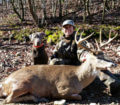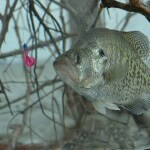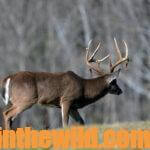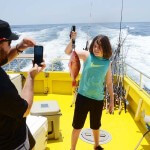Editor’s Note: For many years, Game and Fish Departments, especially in the North and the West, were reluctant to let sportsmen use blood-trailing dogs to recover deer that had been shot. However, today a growing liberalization of regulations to use these blood-trailing dogs to locate dead or wounded deer has resulted in many more deer having been found after the shot and fewer deer being lost. Across the nation, many organizations now are available that a hunter can call to employ the services of a blood-trailing dog.
 Mossy Oak Pro Staffer Bob Walker has lived, hunted and guided in Livingston, Alabama, for 36 years. Walker also has raised and trained blood-trailing dogs for about 35 years. “I got started training blood-trailing dogs after I went on a dove hunt with a fellow who had a yellow Lab he used to retrieve his doves. Seeing that dog work was the reason I bought a Lab. I’d had bird dogs before that time. Back then, I had started helping out at Bent Creek Lodge http://www.bentcreeklodge.com/ in nearby Jachin, Alabama, and occasionally we’d have a hunter shoot a deer we couldn’t find after the shot. I started hearing stories about the guides at Mississippi’s Giles Island http://www.gilesisland.com/ and Tara Wildlife http://www.tarawildlife.com/ that were using Labrador retrievers to find wounded and dead deer. I also realized that besides using my Lab to find deer for hunters at Bent Creek Lodge, I had about four buddies who lived around me in Livingston who took a good number of deer every season during Alabama’s liberal a season, which back then allowed a hunter to take a buck and a doe every day of bow season and gun season. I told my buddies, “If you shoot a deer with your bow, don’t leave your stand, and try to find the deer, even if you see him fall. Call me instead, and let me put my dog on that deer’s trail. He’ll find your deer.
Mossy Oak Pro Staffer Bob Walker has lived, hunted and guided in Livingston, Alabama, for 36 years. Walker also has raised and trained blood-trailing dogs for about 35 years. “I got started training blood-trailing dogs after I went on a dove hunt with a fellow who had a yellow Lab he used to retrieve his doves. Seeing that dog work was the reason I bought a Lab. I’d had bird dogs before that time. Back then, I had started helping out at Bent Creek Lodge http://www.bentcreeklodge.com/ in nearby Jachin, Alabama, and occasionally we’d have a hunter shoot a deer we couldn’t find after the shot. I started hearing stories about the guides at Mississippi’s Giles Island http://www.gilesisland.com/ and Tara Wildlife http://www.tarawildlife.com/ that were using Labrador retrievers to find wounded and dead deer. I also realized that besides using my Lab to find deer for hunters at Bent Creek Lodge, I had about four buddies who lived around me in Livingston who took a good number of deer every season during Alabama’s liberal a season, which back then allowed a hunter to take a buck and a doe every day of bow season and gun season. I told my buddies, “If you shoot a deer with your bow, don’t leave your stand, and try to find the deer, even if you see him fall. Call me instead, and let me put my dog on that deer’s trail. He’ll find your deer.
“In those early years, I just put my dog on a trail of a deer that had been shot, and before long my dog figured out for himself how to locate the deer. Labs are very-smart dogs, and once they understand what you want them to do, they’re eager to please. Sooner or later, a Lab will find a deer that’s still alive, and a Lab will try to bay and put the deer down. That seems to trip their trigger as to what they’re supposed to be doing. I’ve discovered that once Lab finds a live, wounded deer, he will start trying harder to locate wounded deer.
 “Back then I didn’t have the time to create blood trails for my dogs to practice following. However, now that I’m older and seem to have more time, I’ll lay a blood trail or drag a deer hide for my dogs to follow. To be honest, I don’t know whether I started off attempting to train dogs, or the dogs I owned began training me. I didn’t work that hard to train the dogs. I just put them on a wounded deer’s trail, and they went and found the deer. The more I worked them, the better and quicker they could work a trail. Some dogs just learned faster than other dogs.
“Back then I didn’t have the time to create blood trails for my dogs to practice following. However, now that I’m older and seem to have more time, I’ll lay a blood trail or drag a deer hide for my dogs to follow. To be honest, I don’t know whether I started off attempting to train dogs, or the dogs I owned began training me. I didn’t work that hard to train the dogs. I just put them on a wounded deer’s trail, and they went and found the deer. The more I worked them, the better and quicker they could work a trail. Some dogs just learned faster than other dogs.
“Today I’ll take fresh deer blood and freeze it, as well as a deer heart. Then after deer season, I have the equipment I need to train my dogs during the spring and summer. I think the best way to train a dog to trail wounded deer successfully is to give that dog plenty of opportunities to pinpoint deer that have been shot or wounded. Because my wife and I own a deer-processing business https://www.facebook.com/pages/R-J-Meathouse/910504589028073 also, I have a lot of folks ask me, ‘Do you have a blood-trailing dog, or do you know someone who does? I’ve shot a very-nice buck but can’t find him.’ So, I’m able to help the hunters who bring their deer to me to process sometimes locate a deer that they’ve lost.
 “In the 1960s and 1970s, everyone in my section of the country hunted deer with dogs and put on deer drives. Those deer dogs could locate a wounded or a dead deer. But when rifle hunting for deer became popular with most deer hunters, blood-trailing dogs almost vanished. In 1974, I saw an individual hunting out of a tree for the first time. My dad and I were driving by a big soybean field on the way to a deer drive near our home. We spotted this fellow up in a tree. My dad laughed and said, ‘That guy’s going to fall out of that tree and kill himself.’ That hunter had one of those high-powered rifles that no one in west/central Alabama ever used to hunt deer. Then only a few years later, I decided that just about everyone had started hunting out of trees with rifles, and the day of the deer/dog hunter almost faded away. However, today I’m seeing more states allowing ethical hunters to use blood-trailing dogs to find deer they’ve shot that they can’t locate.”
“In the 1960s and 1970s, everyone in my section of the country hunted deer with dogs and put on deer drives. Those deer dogs could locate a wounded or a dead deer. But when rifle hunting for deer became popular with most deer hunters, blood-trailing dogs almost vanished. In 1974, I saw an individual hunting out of a tree for the first time. My dad and I were driving by a big soybean field on the way to a deer drive near our home. We spotted this fellow up in a tree. My dad laughed and said, ‘That guy’s going to fall out of that tree and kill himself.’ That hunter had one of those high-powered rifles that no one in west/central Alabama ever used to hunt deer. Then only a few years later, I decided that just about everyone had started hunting out of trees with rifles, and the day of the deer/dog hunter almost faded away. However, today I’m seeing more states allowing ethical hunters to use blood-trailing dogs to find deer they’ve shot that they can’t locate.”
To contact Bob Walker, write livwater@bellsouth.com, or call 205-652-2489.
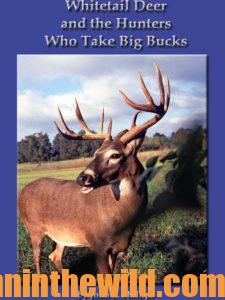
 To learn more about hunting deer, go to John E. Phillips’s book, “Whitetail Deer and the Hunters Who Take Big Bucks” at https://www.amazon.com/Whitetail-Deer-Hunters-Take-Bucks-ebook/dp/B01KU0O1KY, available in Kindle and print versions. To receive your free book on “How to Make Venison Jerky,” go to https://www.emailmeform.com/builder/form/Ece3UZVcOo52cKPJcL
To learn more about hunting deer, go to John E. Phillips’s book, “Whitetail Deer and the Hunters Who Take Big Bucks” at https://www.amazon.com/Whitetail-Deer-Hunters-Take-Bucks-ebook/dp/B01KU0O1KY, available in Kindle and print versions. To receive your free book on “How to Make Venison Jerky,” go to https://www.emailmeform.com/builder/form/Ece3UZVcOo52cKPJcL


